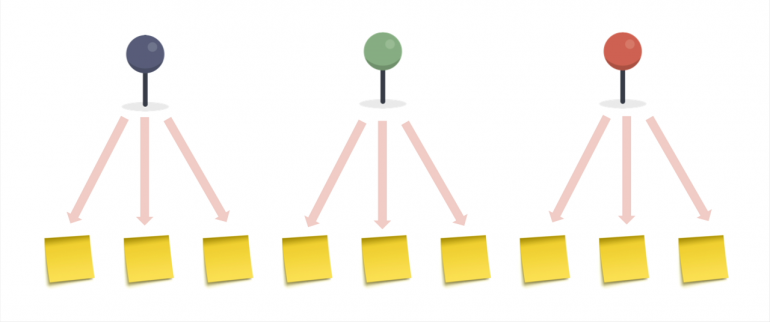Release Planning from the Top Down
Quick...what was the killer feature in your last big release? If your release is like most then you'll probably have trouble answering that question. In fact, if your release is like most it was probably filled with a grab bag of low quality features and a handful of bug fixes. Sure, there may have been one or two important features in there, but for the most part they were buried amongst an avalanche of noise.
Bottom-Up Release Planning
Bottom Up Release Planning
We call this type of release planning Bottom Up Release Planning. It often begins with simply combing the backlog for stories that need to be released and grabbing as many as you can fit in your next release.
Sure, there are advantages to this, most notably that it's easy to do. Release planning tends to be simpler and take less time using this method. In fact, you've probably seen these types of releases before, they often begin with a "wishlist" of features that absolutely must be in the next release.
But releases planned in this way tend to feel disjointed and often fail to make an impact on your users since there's nothing tangible for them to bite on to.
Top-Down Release Planning
There's a better way...and we call it Top Down Release Planning. This type of release planning occurs when we first define an objective or goal for each release and then select only those backlog items that fit that objective.
This type of release planning can be a bit more involved since we must decide if each item selected fits the objective of the release, but it can lead to much more cohesive releases. These types of releases often make a bigger impact on users which can resonate with them for a long time to come.
Why Bother?
You may be wondering why if Top-Down Release Planning is even a little more difficult then why we put forth the extra effort? Well, aside from the advantages I mentioned already, highly cohesive releases tend to be much easier to build a memorable marketing message around.
In addition, focusing the release on a key objective also allows us to make greater strides in trying to solve a sticky problem that our users are currently facing. If we can solve a particular pain point—and build a great message around that solution—then we're much more likely to deliver a release that will resonate with our users.
Want to Know More?
I cover Top-Down Release Planning in more depth in my course new course Agile Release Planning, available on Front Row Agile. If you've ever struggled with building large-scale projects using agile techniques, or have just wondered how planning works in an agile framework then this course is a great fit.
In addition to Top-Down Release Planning I also cover
How traditional planning and agile planning differ, and how to start adopting a more agile mindset.
How to develop a vision for your projects, including creating a vision board and learning proven techniques to cultivate focused concepts.
Strategies for building a roadmap to your goal and important things to consider in the first release and all future releases.
Ways to plan the release, including how to develop a release grid and prioritize features well.
How to build the product backlog by looking through the lens of DEEP and constructing effective sprint plans now and far into the future of your agile development.
Methods to keep plans on track when things just don’t go as you expect.
This course is regularly $50 but for a limited time readers of this blog can get all of this content for just $40 by using the discount code PLANBETTER at checkout. That's an additional 20% off just for following this blog.
Just enter the code above to claim your discount and be on your way to planning great releases and I'll see you in the course!

